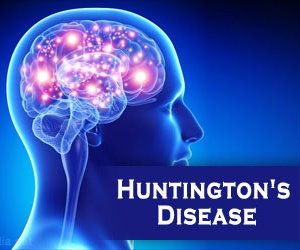Huntington’s Disease (Brain Nerve Cells Breakdown): Stages & it’s Treatment

Huntington’s disease (HD)is an inherited, neurodegenerative condition resulting in clinical symptoms of progressive movement disorders, cognitive deficits, and behavioral changes that may affect an individual’s ability to participate in activities of daily living, work, and community.
Usual onset-30 to 50 years old.
Duration – longterm
Causes – Genetic (inherited or new mutation)
Patients with early HD (stages 1 and 2) have increasing concerns about cognitive issues, and these concerns remain constant during moderate HD (stages 3 and 4th). Patients with late-stage HD (stage 5) have a lack of cognitive concerns, presumably due to impaired insight
CLINICAL FEATURES:
The clinical features of HD include a movement disorder, a cognitive disorder, and a behavioral disorder. Patients may present with one or all disorders in varying degrees.
Chorea may be the initial symptom. This progresses from mere fidgetiness to gross involuntary movements which interrupt voluntary movement and make feeding and walking impossible. severe chorea may appear as uncontrollable flailing of the extremities(ie, ballism), which interferes with function.
Dementia
Behavioral disturbance- personality change, affective disorders, and psychosis occur
Hypotonicity often accompanies fidgety, choreiform movements
Primitive reflexes-grasp, pout, and palmomental are elicited. eye movements are disturbed with the persistence of gaze
Physical therapy may play a role in assisting people with HD to maintain their independence in activities of daily living by addressing both impairments and limitations in functional activities.
Despite the potential for physical therapy to assist people with HD, evidence suggests that people with HD are not always routinely referred for physical therapy, particularly in the early stages. 2-4 this lack of referral may be attributable to the limited scientific support for the effectiveness of physical therapy interventions in HD.
GOAL of physiotherapy Enhance fitness and wellness
Strengthen the muscles of limbs, core thereby increase power, strength, and endurance
Maintain respiratory capacity, vital capacity improve oxygenation using breathing exercises, thoracic expansion exercises
Stabilize gait and Improve balance by teaching balance retraining in sitting and standing
Gait training
Prescribe and fit assistive devices
Educate and support caregivers
Client-specific home exercise programs
Deep brain stimulation
DIAGNOSIS
On clinical grounds with a family history, one has to identify benign hereditary chorea in which intellect is preserved, whereas senile chorea will be seen in older age and the absence of dementia is a key feature.
CT scan may demonstrate atrophy of the caudate nucleus
MRI shows an increase in the T2 signal in the caudate nucleus
PREDICTION OF DISEASE
The Huntington mutation is a trinucleotide repeat on chromosome 4. Identifying the locus provides a reliable method of detecting the disease
Check out these links for relevant information: Neurological physiotherapy
For more details contact
us on 📞9618906780
